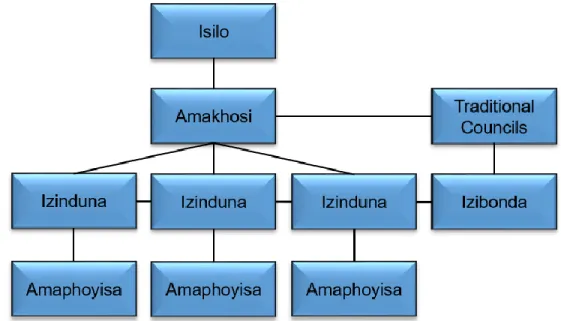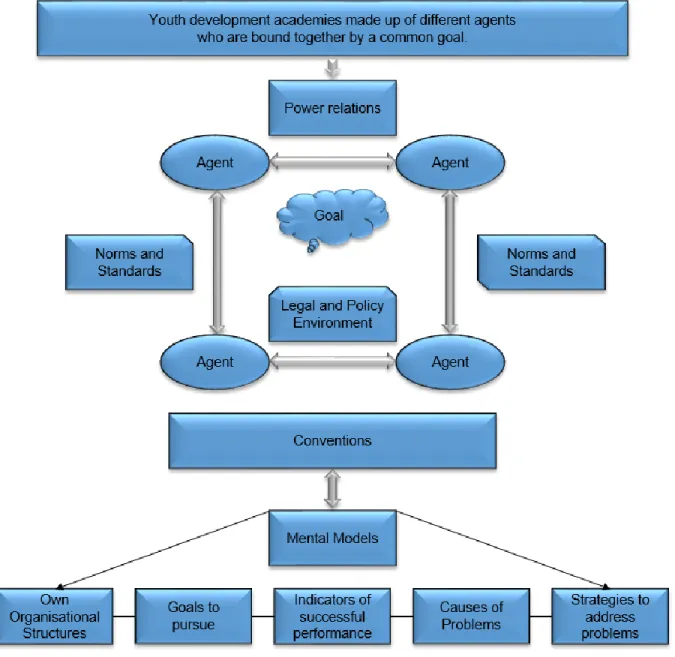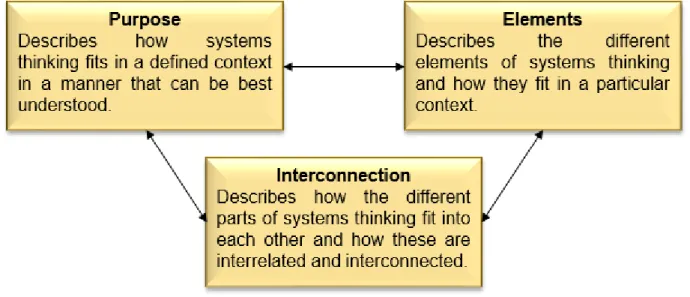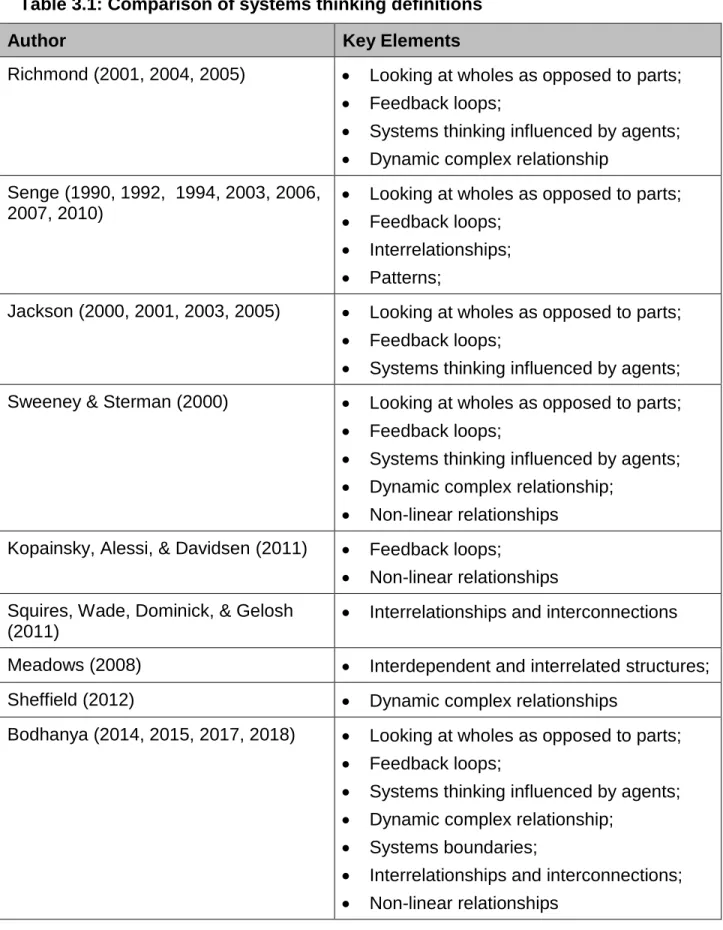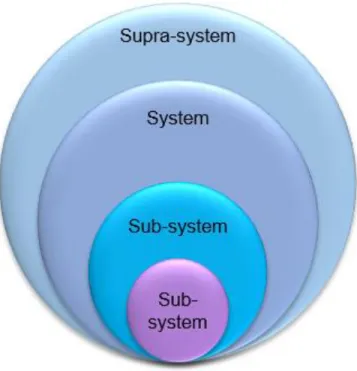Where the work of others has been used, this is duly acknowledged in the text. This study contributes to the knowledge domain on the management of youth development academies using a country systems approach and a nonprofit partnership model.
INTRODUCTION
SCOPE OF THE STUDY
RATIONALE OF STUDY
This study used the systems thinking approach to analyze and propose an alternative and sustainable management approach for the youth development academies. This statement underlines the value of using the systems approach to develop a model that will create sustainability in the management of the youth development academies.
PROBLEM STATEMENT
The study also used Soft Systems Methodology (SSM) in an attempt to identify management and leadership challenges in youth development academies. This was in the form of CATWOE (Clients, Actors, Transformation, World View, Owners and Environment). The SSM's CATWOE is an action-oriented tool used to solve complex problems in organizations in an integrated manner (Checkland and Poultrer, 2010).
THE AIM OF THE STUDY
State-owned institutions, whether directly managed by the government or by non-profit organizations as agencies, are likely to exhibit less flexibility in terms of governance and management structures due to the bureaucratic nature of public management. The rationale for this study therefore arose from dichotomous and diametrically opposed approaches to the management and leadership of public institutions by the government on the one hand and non-profit organizations (NPOs) on the other.
OBJECTIVES OF THE STUDY The objectives of the study were to: The objectives of the study were to
THE RESEARCH QUESTIONS
SIGNIFICANCE OF THE STUDY
The study will further seek to increase understanding of the challenges within the state-NPO partnership within a practice of community development. It drew attention to the complex nature of the relationship between government, NPOs, the private sector, the community, traditional leadership, local authorities and suggests possible approaches to address such challenges.
RESEARCH DESIGN
The research methodology, as the epistemological basis of the research, was the application of mixed methods, using qualitative and quantitative approaches. The main aim was to seek and gain a deeper understanding of the perceptions, views and perspectives from stakeholders to explore and assess the nature and complexity of the impacts of inherent feedback on the overall management sustainability of NPOs managing academies. of youth development.
RESEARCH APPROACH
ASSUMPTIONS AND LIMITATIONS
Assumptions
Limitations
STRUCTURE OF THE THESIS AND PREVIEW OF THE STUDY
This chapter provides full details of the way in which the data was collected, analyzed and presented. Chapter Six – Quantitative Analysis: In this chapter, the study is focused on the presentation of the quantitative data that was obtained through the questionnaires that were administered.
CONCLUSION
This chapter reviews the literature relevant to the study of the management of youth development academies, or just youth academies as they are sometimes called. The focus of the study is youth development academies funded by the state and managed by non-profit organizations (NPOs).
RELEVANT LITERATURE
Community College Institutions in other countries
At this point, it is worth examining the role of local government in youth development academies. The role of the local or parish council members cannot therefore be underestimated in the affairs of the youth development academies.
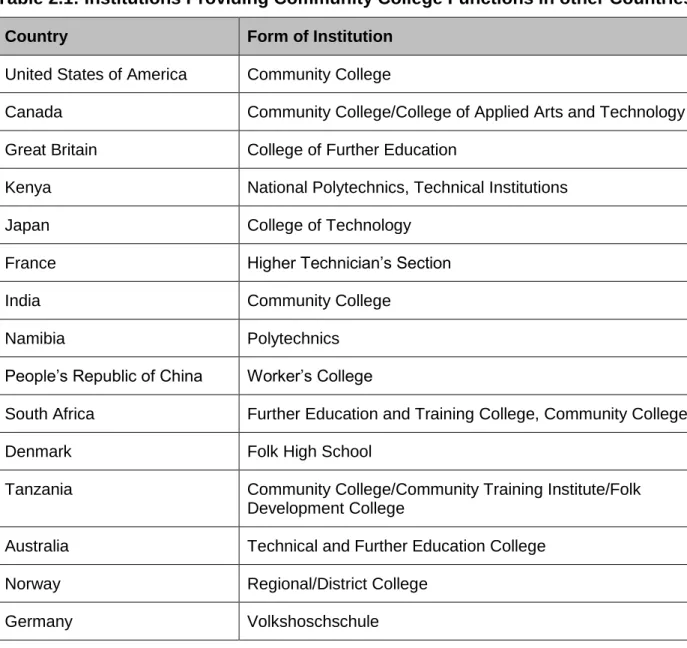
NPOs and legitimacy
Previously, Wyngaard & Hendricks (2010) had advocated a diverse mix of backgrounds and skills in the composition of NPOs' governance and management structures to provide them with the necessary skills and balance. This study used the case of youth development academies to explore employee feelings in an environment where there are two dichotomous forces involved in management.
CONCLUSION
The study further explored various models of youth development academies in South Africa in the private sector and other formats. The next chapter, which is Chapter 3, focuses mainly on the theoretical constructs that support the management of institutions such as youth development academies.
COMPLEXITY THEORY
- Complex Adaptive System
- Emergence
- Stakeholder theory
- Non-linearity
- Agents with Schemata
- Edge of Chaos
- Sensitive Dependence on Initial Conditions and Path Dependence
- Co-Evolution and Egalitarianism
- Punctuated Equilibrium
- Self-Organization
- Societal learning and change (SLC)
The complexity and non-linearity of the system in the youth development academies is causing the emergence of other systems. This applies to the role of the traditional leadership where the youth development academies are located.
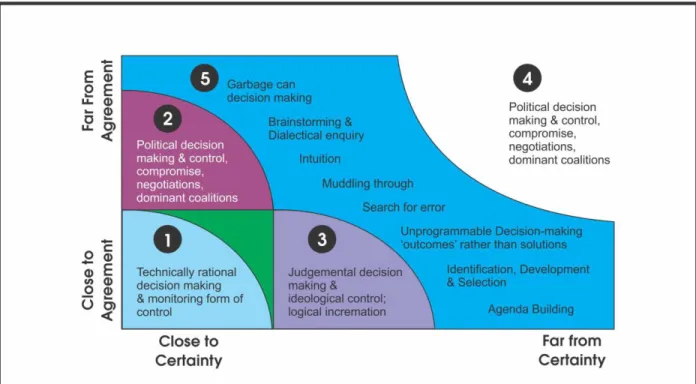
PUBLIC POLICY AND COMPLEXITY
There is a strong correlation between this description and the central tenets of complexity and systems theories, as public policy takes place in the setting of a multi-stakeholder environment with competing needs and interests. This is relevant because the research is concerned with how government policies in the field of youth development, and specifically in the field of youth development academies, were translated into management actions.
SYSTEMS THEORY
Organizational Theory and Systems Thinking
Organizations as machines – this view is based on the notion that organizations achieve the goals of their owners and on linear approaches. This metaphor is congruent with the properties of feedback and control within the complex adaptive system.
The Soft Systems Methodology (SSM)
- Applying CATWOE as form of Soft Systems Methodology
In relation to the Youth Development Academy Conceptual Framework (2013), the intended customers/clients of the intended intervention are the youth living in KwaZulu-Natal. In the case of the youth development academy model, the owners of the process are the intended beneficiaries or clients of the program, namely the youth in the province of KwaZulu-Natal.
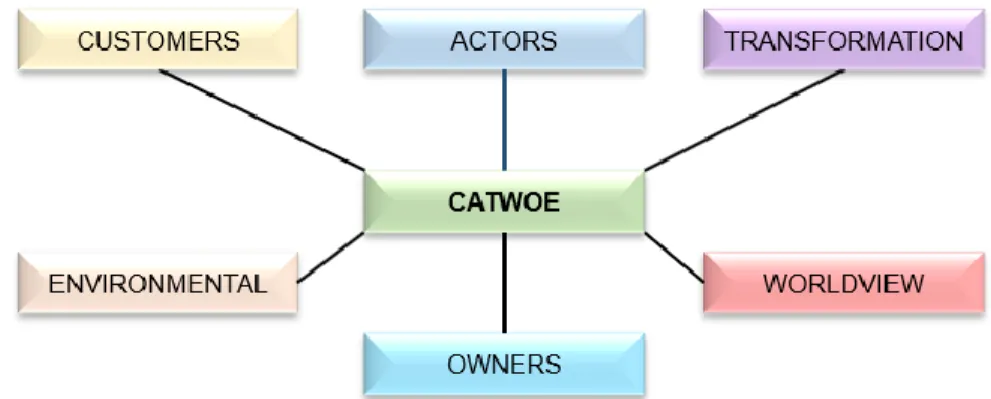
Rich Picture
Feedback Loops, Prediction and Control
Riley et al emphasize the ability of the feedback loops to inform decision-making and thereby contribute to policy interventions. The current management and leadership malaise was possible because of the feedback loops that negatively affected the management and leadership.
Causal Loops Diagramming
Figure 3.6 provides an illustration of the interrelationship between different facets of the system in the context of NPO management. Failure of one part of the system to function properly has serious consequences for the functioning of other parts and therefore for the entire system.
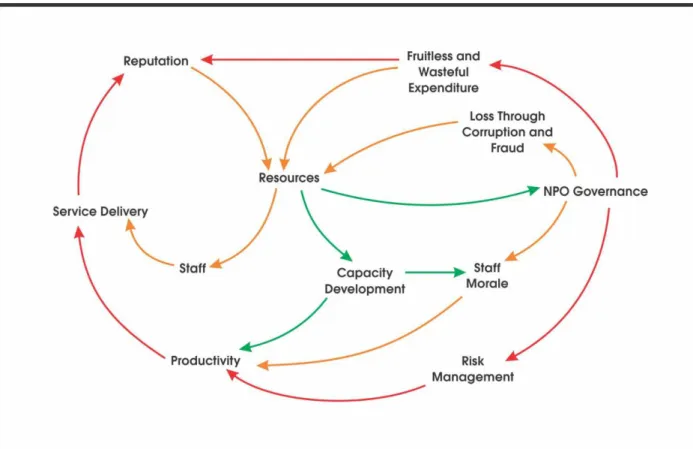
Viable Systems Model (VSM)
The viable constellation model can further be described as a dynamic process that brings together different interested parties who have a common vision and objectives to achieve without having to form new organizations. The various parties involved in the management of the youth development academies can best be brought together, it is suggested, by the viable constellation model, which can be used mainly to bring together different role players to work interdisciplinary in collaboration with achieving a common goal within a matrix ratio.
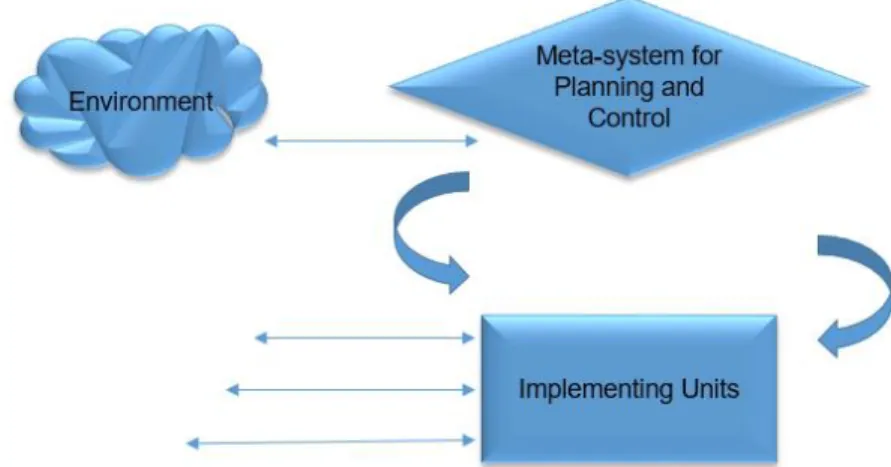
Agency and resource dependency theories
Chait et al., (2018) raise critical questions that warrant serious reflection on the role of boards involved with nonprofit organizations. Therefore, this study examines agency theory in relation to NPOs responsible for managing youth development academies and the ways in which it can be used to better understand the complex relationship that exists between agent and principal.
Conclusion
In other words, the implementing agent is expected to represent the principal's business interests in the transaction at all times. In the next chapter (Chapter 4), the researcher gave a description of the research methodology used in this study.
RESEARCH OBJECTIVES The objectives of the study were to: The objectives of the study were to
This chapter focuses specifically on how the research process was designed and the methodology adopted for the study. This chapter also deals with the research paradigm and approach that guided the research exercise.
THE RESEARCH QUESTIONS The research questions were: The research questions were
THE RESEARCH PHILOSOPHY
Humphrey (2013) refers to a research paradigm as a constellation of research ideas and philosophical assumptions shared within the research community. Thus, the choice of research methods, which according to Nicholson (2011) is basically about methods that are used in the collection of data and which help to arrive at results that answer the research goals and questions on a conscious rather than random way.
RESEARCH DESIGN
Wiid & Diggines (2010) define the main research design or framework as a guide for collecting data and a process for conducting its analysis. The study was situated in phenomenology, which deals with the stories of people who have 'lived through' the experience in youth academies.
RESEARCH APPROACH
In this study, the intention was to use the systems approach to create a better understanding of the management model of the youth development academies. This approach lends itself well to this study, which examines people's experiences in their interactions with youth development academies.
THE RESEARCH INSTRUMENTS
- Focus groups
- Interviews
- Document analysis
- Questionnaires
Members of social cooperatives, board members and middle managers from the Social Development department were used as participants in the focus group discussions. One of the instruments used to generate the data for this study was the semi-structured interviews.
UNIT OF ANALYSIS
When data was collected for quantitative purposes, a set of questionnaires was applied to a group of officials from within the Department of Social Development, officials from other government departments and the staff of NPOs who run the youth development academies. As the study employed the mixed method approach, qualitative and quantitative application, it allowed for triangulation, complementarity and the development of new models based on the initial qualitative data collection, seeking to identify points of convergence, confirmation and cross-checking of establish results based. on the quantitative data analysis.
POPULATION
In this study, the population included management-level officials of the Department of Social Development in Central Offices and District Offices who were directly or indirectly involved with the management of youth development academies, officials from other government departments and entities that supported academies, all NGOs. board members, academy staff members, social cooperatives, local traditional leaders and local ward councilors of the municipality. In defining the population, the study considered common observable characteristics of the population, such as their role and influence in the management of youth development academies.
SAMPLING
A sample of ninety (98) individuals or 100% of the population was selected for validation, a high confidence level for obtaining a statistically significant effect as shown in Figure 4.1. In Figure 4.1 the participants in the population sample were characterized by their influence on academies management, program delivery, governance and leadership, administration, community leadership and local government.
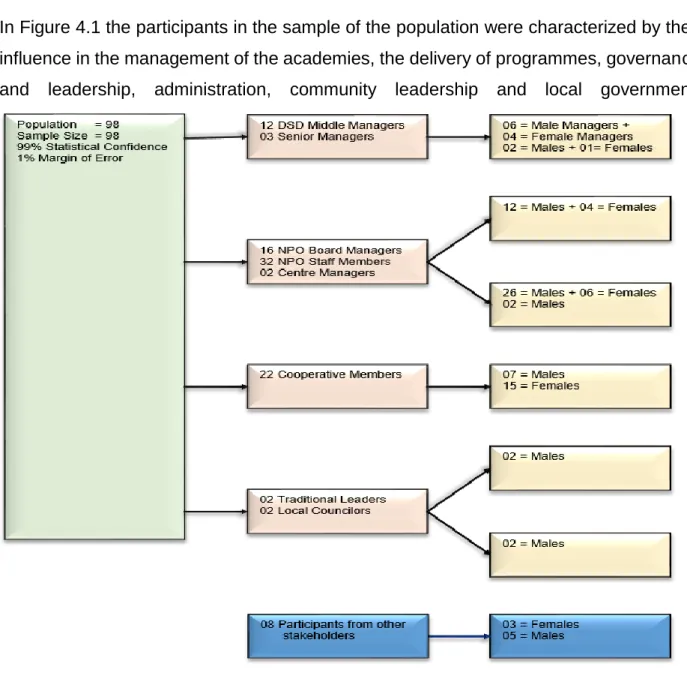
DATA COLLECTION
14 board members of the two NWOs that manage the academies on behalf of the government. These elements of the sample were composed of three (03) senior managers and twelve (12) middle managers from the Department of Social Development, chosen because of their direct role in the management of the youth academies.
PILOT STUDY
DATA ANALYSIS
Once the themes were identified through the process described above, the qualitative data were revisited and re-read with a view to identifying further overarching themes and to further explore these themes at a more in-depth level in order to understand the variables within these themes. This process enabled the researcher to construct the CLDs (Causal Loop Diagrams) related to each theme from the qualitative data collected after all the identified themes interacted with each other through the feedback loop system.
ELIMINATION OF BIAS
The management challenges within the agent NPOs at the youth development academies highlighting strengths and threats were identified, and through the causal loop diagramming, positive and negative feedback loops were developed through inventory flow diagrams through a systems approach methodology.
ETHICAL ISSUES
The right to withdraw from the research exercise at any time by participants with no negative implications for the participants was explained to them. The research methods and data collection tools used for the research were designed in such a way that no harm, stress or embarrassment would be caused to the participants.
VALIDITY AND RELIABILITY
The validity of the data collection instruments was established through the use of peer review, which was done by allowing two of the five-person PhD cohort, which included the researcher, to review the research instruments, specifically the interview and survey questions. . The data collection instruments were also provided to the supervisor for feedback prior to submission to the ethics office and prior to the initiation of the data collection process.
EXPECTED CONTRIBUTION TO KNOWLEDGE
CONCLUSION
This chapter, the first of two chapters on data presentation and analysis, presents the qualitative data and analysis. The chapter focuses on qualitative data obtained through a series of focus group discussions and interviews which gave participants the opportunity to express their views on matters relating to the management of youth development academies.
RESPONSE RATE
DATA COLLECTION
The third group was the Middle Management Service (MMS) from the Ministry of Social Development. Semi-structured face-to-face interviews were conducted with two (02) center managers from each of the academies.
PROFILES OF THE RESEARCH PARTICIPANTS
Middle Managers
This can be attributed to the fact that approximately 80% of the staff in the Institute for Social Development are women. During focus group discussions with the MMS group, the issues of managing security at the academies emerged.
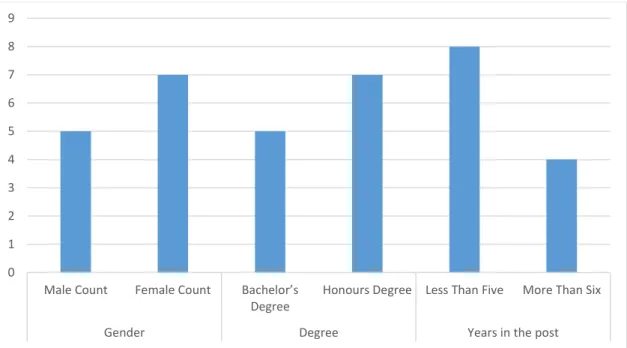
Human Resource
Financial Management
Asset
Security Management
Contract Management
Management of Cooperatives
Programme Management
Stakeholder Management
Monitoring and evaluation
Board Members
One board member even said that 'the management of the academy should be done jointly by the Ministry of Social Development and the board of the NPO, because we have little knowledge of this work. The role of the ministry must be strong and clear to support us, otherwise we will be left in the dark.”
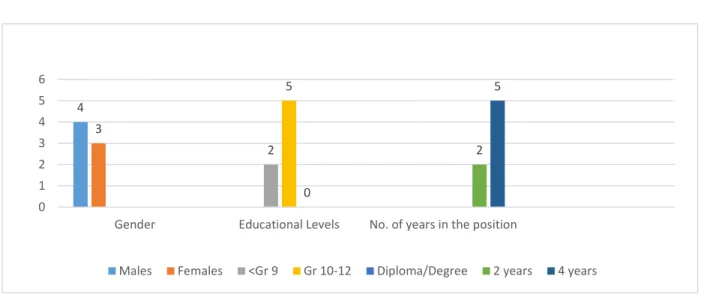
Social Cooperative Members
This means that the members of the cooperatives are local residents from the communities surrounding the academies. Regarding the issues of the current roles of the NPO board in the governance of youth development academies, the attendees responded by saying that the NPO board.
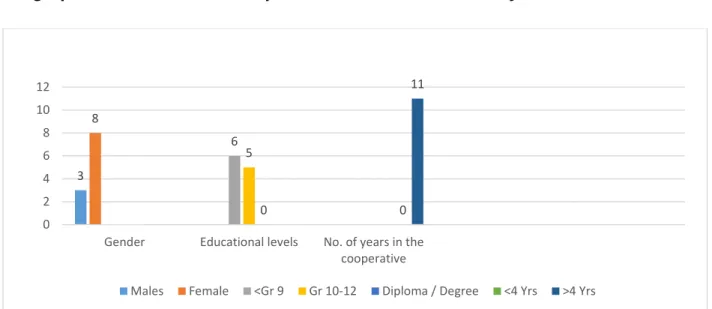
Traditional leaders and local ward councillors
The first set of semi-structured interviews were conducted with the traditional leaders of the communities in the areas in which the youth development academies are located. Traditional Leader A said a new NPO board representing the interests of the local community should be elected.
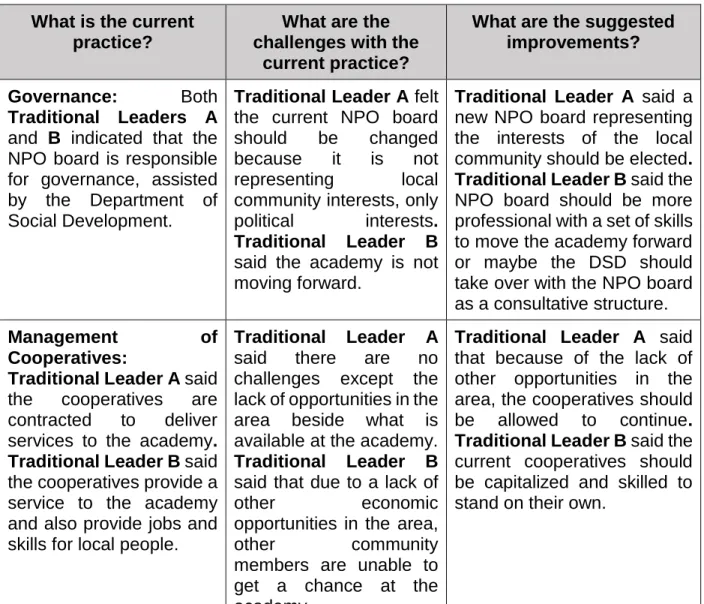
Youth Development Academy Centre Managers
